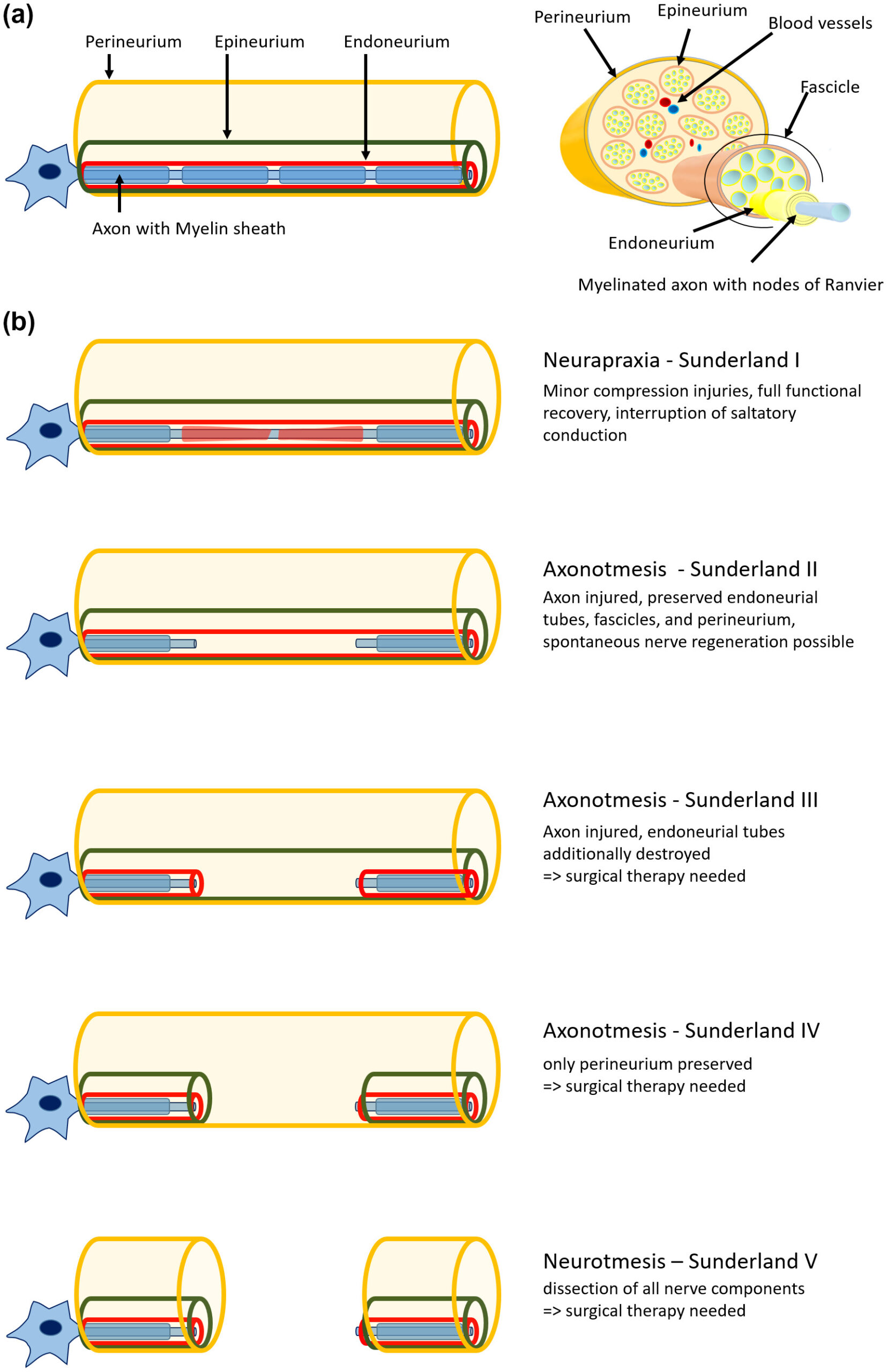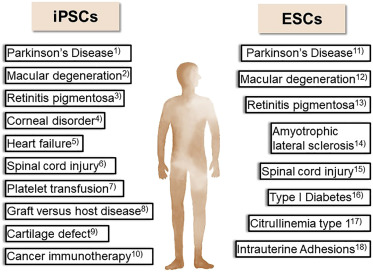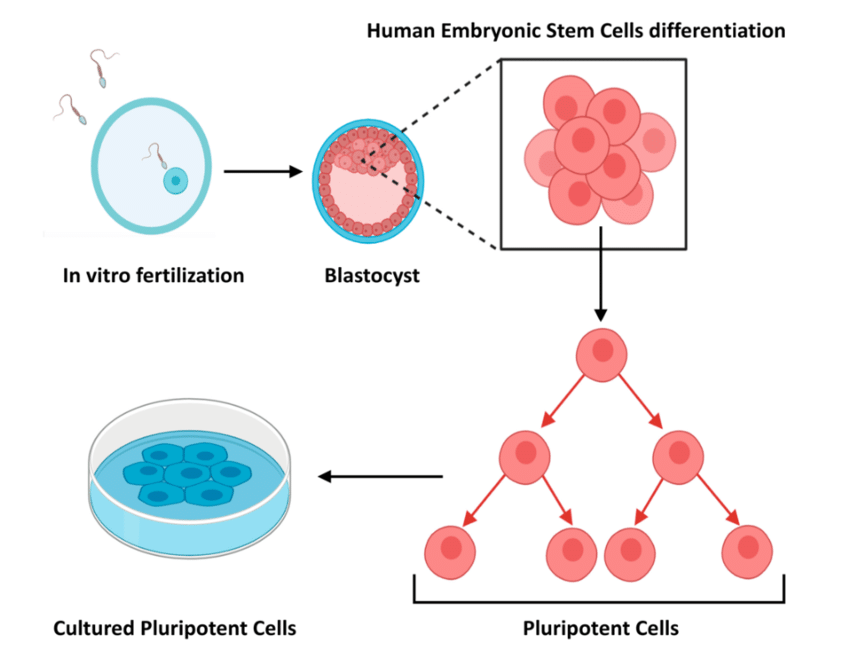—In vitro and in vivo
Sophie Charlotte Rhode, Justus Patrick Beier, Tim Ruhl
Abstract
After peripheral nerve injury, Schwann cells (SCs) are crucially involved in several steps of the subsequent regenerative processes, such as the Wallerian degeneration. They promote lysis and phagocytosis of myelin, secrete numbers of neurotrophic factors and cytokines, and recruit macrophages for a biological debridement. However, nerve injuries with a defect size of >1 cm do not show proper tissue regeneration and require a surgical nerve gap reconstruction. To find a sufficient alternative to the current gold standard—the autologous nerve transplant—several cell-based therapies have been developed and were experimentally investigated. One approach aims on the use of adipose tissue stem cells (ASCs). These are multipotent mesenchymal stromal cells that can differentiate into multiple phenotypes along the mesodermal lineage, such as osteoblasts, chondrocytes, and myocytes. Furthermore, ASCs also possess neurotrophic features, that is, they secrete neurotrophic factors like the nerve growth factor, brain-derived neurotrophic factor, neurotrophin-3, ciliary neurotrophic factor, glial cell-derived neurotrophic factor, and artemin. They can also differentiate into the so-called Schwann cell-like cells (SCLCs). These cells share features with naturally occurring SCs, as they also promote nerve regeneration in the periphery. This review gives a comprehensive overview of the use of ASCs in peripheral nerve regeneration and peripheral nerve tissue engineering both in vitro and in vivo. While the sustainability of differentiation of ASCs to SCLCs in vivo is still questionable, ASCs used with different nerve conduits, such as hydrogels or silk fibers, have been shown to promote nerve regeneration
1 INTRODUCTION
Peripheral nerve injuries often affect young patients, leading to high costs in the health-care system. They have various causes. Besides accident-related short- or long-distance transection injuries (e.g., knife cut, saw wound) and crush injuries, also birth traumata, ischemia, or malignant processes can lead to nerve lesions (Bahm et al., 2009; Farley et al., 2019; Gilbert & Whitaker, 1991; Myers et al., 1993; Reinhardt et al., 2010). Depending on which anatomical structure of the peripheral nerve is lesioned, surgical therapy for peripheral nerve regeneration has to be performed to regain nerve function.
3 ADIPOSE TISSUE STEM CELLS
Stem cells have been isolated from adipose tissue first in 2001 (Zuk et al., 2001). Adipose tissue stem cells (ASCs) are mesenchymal cells from the stroma of fat tissue with multipotent differentiation capability. ASCs can be easily obtained in high numbers (7% of total cell amount, i.e., approx. 50.000 cells/ml tissue), without causing a significant donor site morbidity using minimally invasive techniques (D’Andrea et al., 2008; Meyer et al., 2015). Following the criteria of the Mesenchymal and Tissue Stem Cell Committee of the International Society for Cellular Therapy, ASCs have to be plastic-adherent in standard culture conditions. They must have the ability for osteogenic, adipogenic, and chondrogenic differentiation in vitro. They must express CD105, CD90, CD73 as measured by flow cytometry; and they must lack the expression of hematopoietic linage markers (CD14 or CD11b, CD34, CD45, CD19 or CD79α, and HLA-DR; Dominici et al., 2006).
Adipose tissue can be harvested in different ways. Depending on the preparation of fat grafting, different results can be obtained concerning graft survival, vascularity, cell proliferation, skin thickness, quality of the tissue, and inflammation (Oranges et al., 2019). For example, manual lipoaspiration can be performed using a syringe. The suction area is infiltrated with a tumescent solution. Then the lipoaspirate can be collected into a syringe using a cannula after setting a vacuum. The so-collected adipose tissue can then be further processed; ASCs are isolated from the stromal fraction by enzymatic digestion. The cells proliferate rapidly in vitro, which makes them ideal candidates for further investigations in tissue engineering. Furthermore, ASCs secrete various growth factors and cytokines, such as VEGF, hepatocyte growth factor, granulocyte colony-stimulating factor, granulocyte-macrophage colony-stimulating factor, IL-6, -8, -11, indicating their multiple features for regenerative medicine approaches
4 ADIPOSE TISSUE STEM CELLS AND PERIPHERAL NERVE REGENERATION
The injection of fat grafts around a coapted sciatic nerve in rats leads to reduced perineural adherence and minor scar formation (Cherubino et al., 2017). Furthermore, ASCs have been solely investigated for peripheral nerve regeneration
8 CONCLUSION
The procedure of ANT as the clinical gold standard for peripheral nerve repair is associated with certain difficulties, including donor nerve sacrifice and nerve mismatch. During the last years, the approaches for cell-assisted nerve regeneration have gained significant progress. The increasing understanding of the regenerative character of adult stem cells, that is, adipose tissue stem cells, allowed for experimental investigations on the use of these cells for therapeutic application after peripheral nerve injuries. ASCs can differentiate into multiple phenotypes, including the SCLCs. Furthermore, ASCs, as well as SCLCs are able to support and/or promote peripheral nerve regeneration when combined with various nerve scaffolds in vivo. While therein, the differentiation of ASCs to SCLCs is assumed to mimic the biological features of natural SCs, the durability and stability of the SCLC phenotype have not been approved in vivo or in vitro. Importantly, the regenerative effects of ASC-seeded conduits can exceed the effects of SCLC or SC-seeded conduits. Though not every aspect of the mechanism of ASCs supporting peripheral nerve regeneration is understood, these cells remain promising candidates for supporting peripheral nerve regeneration.




